Your child with Down syndrome is 33 months old and you are preparing to transition from Birth-to-Three services into an early childhood program at your local school.
When researching an early childhood program, it is important to think about what your child should achieve by the end of the program. This will help you figure out your goals and ensure that you’ve planned out the best program to meet your child’s needs. While every child is different, at age 6 you want your child to be able to:
- Maintain focus on a learning task for 15 minutes and transition to another less desirable task with minimal prompting.
- Make a majority of speech sounds in isolation and have a number of words that are intelligible to an unfamiliar listener.
- Proactively greet a non-disabled peer.
So, how do you, as a parent, influence the creation of these goals and how do you advocate for the services your child needs to have a reasonable opportunity to achieve these goals? The only justification for any service is that the service is required to achieve the goal. The public school will ask for your child’s records, talk with you, conduct their own assessments, draft goals and allocate aides, therapists, and other services that are required to meet the goals. Your best opportunity to ensure your child has appropriate goals and services is to ask for a meeting immediately after the school experts do their assessment to include you, your old therapist and future therapist. Your Birth-to-Three therapists are best qualified to confirm that both the goals and services are appropriate. Advocate strongly for this meeting before the school drafts their goals.
Advocate for copies of all assessments five business days before the IEP (Individualized Educational Plan) meeting and a copy of the complete IEP draft three business days before the meeting. You should review these materials with your Birth-to-Three therapists before the IEP and ask that your therapists attend. Most IEP meetings last 1 to 1.5 hours and you will benefit greatly from reading all materials prior. It may be beneficial to ask school staff to address any questions you may have at the IEP meeting. Make sure not to end the IEP prior to a review of the I-9 (program summary).
When creating goals, it’s important to consider the present level of your child and measurable results. For example: “Johnny will increase his ability to maintain focus on an educational topic from 5 minutes with two verbal prompts 50% of the time to 15 minutes with one visual prompt 80% of the time. Finally, if during the IEP you don’t feel like your voice is being heard or you are un-comfortable, you can ask to re-convene the IEP and pause it for a few days or weeks so you have time to consult with other professionals and ensure you are making the best decision for your child. The word “re-convene” is important and very different from the words “change it later.”
Down Syndrome Association of Wisconsin (DSAW) offers one to two hour roadmap sessions that help to educate parents on the transition process and best practices. If interested, Ron can be contacted directly at (414) 327-3729 or ron@dsaw.org.
For more information on the transition out of Birth-to-Three and the IEP process, read Navigating Individual Education Programs for Children Turning Three.
What is your advice on the best way to navigate the transition from Birth-to-Three to an early childhood program?
Ron is the Executive Director at the Down syndrome Association of Wisconsin which has Chapters in Milwaukee, Sheboygan, Green Bay, Appleton, Eau Claire and La Crosse. Ron received the Transition Initiative Grant Award for Outstanding Individual Family Member Transition Assistance. Ron was selected to Governor Walker’s Disability Employment Roundtable in 2014. Ron is co-chair of the IRIS (Include, Respect, I Self Direct) Advisory Board working to help people with disabilities live independently in the community.



Leave a Reply